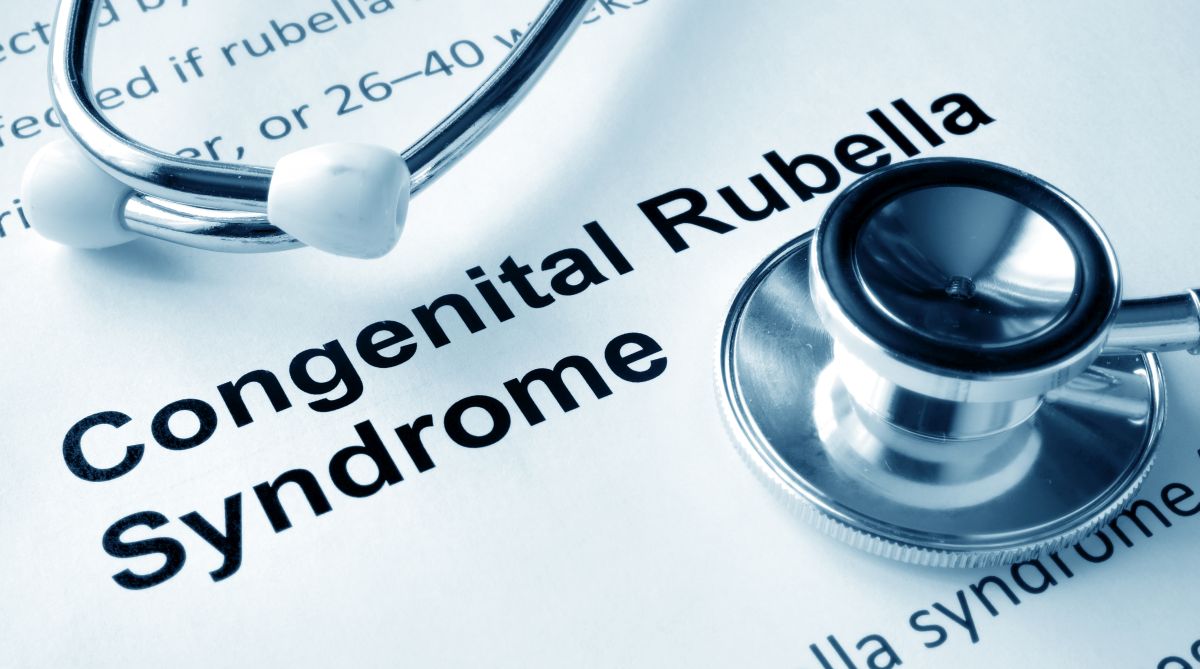Eastern Railway achieves 100pc electrification
With the successful completion of CRS inspection of this section, Eastern Railway’s entire 2848 km is converted to electrified route.
Rubella is a contagious, generally mild viral infection that occurs most often in children and young adults. It is the leading vaccine-preventable cause of birth defects.

Congenital rubella syndrome (CRS) can cause cataract, deafness, heart defects and mental retardation in newborn babies. (Photo: Getty Images)
India is seeing a rise in the number of rubella infections transmitted from a pregnant woman to foetus, resulting in babies born with various diseases. Congenital rubella syndrome (CRS) can cause cataract, deafness, heart defects and mental retardation in newborn babies.
Earlier this year, a health ministry surveillance found that more than 50 among the 150 babies screened for the rubella syndrome in the last six months had been detected congenital rubella syndrome and birth defects. The foetus usually gets infected in the first three months of pregnancy.
Rubella is a contagious, generally mild viral infection that occurs most often in children and young adults.
Advertisement
It is the leading vaccine-preventable cause of birth defects. Rubella infection in pregnant women may cause foetal death or congenital defects known as congenital rubella syndrome. Rubella is spread in airborne droplets when infected people sneeze or cough. Once a person is infected, the virus spreads throughout the body in about five to seven days. During this time, pregnant women may pass the virus on to their foetuses.
There is no specific treatment for rubella, but the disease is preventable by vaccination. While rubella virus infection usually causes a mild fever and rash illness in children and adults, infection during pregnancy, especially during the first trimester, can result in miscarriage, fetal death, stillbirth, or infants with congenital malformations, known as congenital rubella syndrome (CRS).
According to experts, children with CRS can suffer hearing impairments, eye and heart defects and other lifelong disabilities, including autism, diabetes mellitus and thyroid dysfunction – many of which require costly therapy, surgeries and other expensive care.
The highest risk of CRS is in countries where women of childbearing age do not have immunity to the disease (either through vaccination or from having had rubella). Before the introduction of the vaccine, up to four babies in every 1000 live births were born with Congenital Rubella Syndrome.
1. The most serious consequences of rubella infection occur when it is acquired during the first 3 months of pregnancy.
2. There is no harm in vaccinating women with Measles Rubella vaccine during their menstruation cycle.
3. Most rubella infections today appear in young, non-immunised adults rather than in kids. In fact, experts estimate that 10% of young adults are currently susceptible to rubella, which could pose a danger to any children they might have someday.
4. Before a vaccine against rubella became available in 1969, rubella epidemics happened every 6-9 years, usually among kids 5 to 9 years old, along with many cases of congenital rubella.
5. Vaccination is the only solution for preventing congenital rubella syndrome.
It is estimated that there are over 30,000 cases of congenital rubella syndrome in India every year. In 2010, an estimated 103,000 children were born with Congenital Rubella Syndrome globally, of which around 47,000 children, i.e. 46%, were in the South-East Asia region.
India, along with ten other WHO South East Asia Region member countries, has resolved to eliminate measles and control rubella/CRS by 2020. In this direction, the Ministry of Health & Family Welfare has initiated Measles Rubella (MR) vaccination campaign in the age group of 9 months to less than 15 years in a phased manner across the nation. The campaign aims to cover approximately 41 crore children.
Measles-Rubella campaign is part of global efforts to reduce illness and deaths due to measles and rubella/CRS in the country. Measles immunisation directly contributes to the reduction of under-five child mortality, and in combination with rubella vaccine, it will control rubella and prevent CRS. MR Vaccine is a safe and an effective vaccine, in use for over 40 years and in many countries across the world.
Till date MR vaccination drives have been completed in 20 states & UTs of India, 6 states & UTs are still running the campaign. A total of 11.85 crore (118.5 million) children have been safely vaccinated in 26 states and union territories.
The economic and social dividends awarded by vaccination to the community are substantial — particularly when one considers that vaccines are able to reach the poorest and most vulnerable who are disproportionately impacted by the tragic consequences of a severe disease.
According to a study published in The Lancet this year, it is because of the gains made by India in immunization, sanitation, maternal and child health in last four years, which have contributed to the reduction of infant mortality rate (IMR) for the first time in last 10 years.
This year, India would be hosting the global Partners’ Forum on maternal, neonatal and child health (MNCH) and bring together voices from over 100 countries on strategies that have worked in partner countries to attain progress on SDG goals.
Advertisement